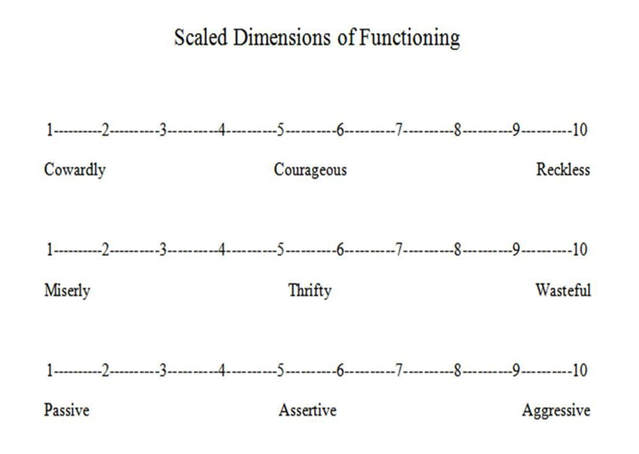Decision-Making
Balancing the Needs of Self and Others
A practical approach to moral decision-making.
Posted February 26, 2021
Psychology in general and psychotherapy, in particular, have a complicated, ambivalent relationship with moral guidance. On one hand, the classic view has been that therapists should not make value judgments but should respect the choices of their clients, whatever these might be. The philosophical framework of this view is moral relativism: the idea that there are no objective standards of right and wrong, so every person’s opinion is equally valid and there is no justification for trying to change someone’s view.
On the other hand, many of the moral issues that arise in life seem so clear and urgent that abstract arguments about subjectivity and objectivity, however interesting they might be in a philosophy class, seem beside the point. For example, it seems obvious that a bully who victimizes other children should stop this behavior even if he or she believes in a value such as, “Weak kids deserve to get beaten up” (a common belief among bullies); it also seems obvious that abuse perpetrators should change any aspect of their value system that supports this behavior (and many perpetrators have such rationalizations).
I don’t think we can afford to be paralyzed by philosophical dilemmas when facing practical moral questions, so I will try to offer something useful in this post. The focus here is on moral choices that affect the welfare of other people, not morality in the sense of religion or sexual practices between consenting adults, where the relativistic view makes good sense.
A commonsensical moral system can be based on the idea that all human beings are of equal value, so their welfare is equally important. Because virtually all people strive for their version of happiness and have experiences of pain and well-being that are as real to them as ours are to us, there is no apparent basis for deciding that one person’s welfare is more important than another’s. Therefore, when choices are considered, the effects of possible actions on the well-being of all the people involved should be given comparable weight. This simple moral calculus might be philosophically unsophisticated, but it seems practical for use in real-world situations (Shapiro, 2020a; 2020b).
Two Opposite Moral Errors
In everyday life, the common threats to ethical behavior seem to lie, not in esoteric moral quandaries, but in the common bias toward prioritizing one’s own needs and desires differently from other people's needs and desires. Unequal prioritizing or weighting can take two forms: self > others, and others > self.
People with externalizing problems (e.g., conduct disturbance, narcissism, psychopathy) typically prioritize their own needs and desires above those of others. As a result, they engage in behavior that produces more inconvenience, loss, or harm to others than benefit to themselves, resulting in a net loss of human welfare.
People with internalizing problems (e.g., anxiety, depression, low self-esteem) often prioritize other people’s needs and desires above their own. As a result, their actions sometimes cause more inconvenience, loss, or harm to themselves than benefit to others, which also results in a net loss of human welfare.
In both cases, markedly unequal prioritizing of self and others seems unfair. (Slight differences aren't a problem.) Externalizing individuals are generally unfair to others, and internalizing people are often unfair to themselves.
Morality’s Goldilocks Zone
The unifying theme of this blog is an idea traceable to Aristotle, Buddha, and Confucius and supported by a great deal of recent research: Effective psychological functioning usually involves some kind of moderate balance between opposite extremes. This means that most forms of dysfunction involve potentially effective ways of functioning that have gone too far.
The best way to understand this idea is to picture spectrums that show the full range of the dimension in question. Here are three classic examples:

The idea of balance, applied to morality, links back to the idea of equality. To decide whether an action is ethically right, we should place similar emphasis on the welfare of all the people who would be affected by the possible action. Some difference in prioritization of self and others seems almost inevitable, but the difference should not be huge. By giving similar weight to the well-being of everyone involved, we can choose actions that maximize the overall welfare of all the people in the situation—the greatest good for the greatest number.
Here is a diagram that summarizes this post:

In behavior at both extremes of this continuum, human beings are hurt. The only difference is the location of the damage: self or others. If all people are equally important, suffering is equally regrettable regardless of who is hurt.
The diagram depicts both the clear nature of some values-related choices and the ambiguous nature of others. Behaviors at both extremes of the spectrum seem unambiguously regrettable. The diagram also shows two types of grey areas: There is a fine line between vigorously pursuing one’s own goals and encroaching on the rights of others, and there is another fine line between being extremely altruistic and subverting one’s needs to those of others. In both cases, the question is whether more net harm or good is experienced by all the people affected by the action in question.
This analysis might seem to have confusing implications for people who are heroic or saintly because such individuals are very self-sacrificing. We can straighten out this confusion as follows. Sacrificing one’s welfare, or even sacrificing one’s life, makes moral sense and is worthy of great admiration if more is gained by others than is lost by the self. People are considered heroic or saintly when their self-sacrifices either benefit many people or benefit one other person to an enormous degree. This kind of behavior is morally balanced and is located in the mid-range of our spectrum, toward the self-sacrificing end.
As Aristotle taught, when good things go too far, they become bad. It is a bad idea to sacrifice large amounts of our own well-being to do a little bit of good for others because this results in a net loss of human welfare. This outcome cannot be okay if the two parties are of equal importance and worth. People who are willing to sacrifice a lot to benefit others a little usually suffer from low self-esteem.
Moving Toward the Middle
Effective therapy and self-help usually move people from the extremes of spectrums toward their middles. In the realm of morality, this means that selfish people learn to prioritize others’ needs more, and self-denying people learn to prioritize their own needs more.
The simple moral principle that we are each as important as every other person in the world—no more and no less—addresses problems at both ends of the continuum. Our diagram shows that fairness to both self and others is located in the middle of the spectrum. From whichever end we start, we need to move toward the middle, so different people need to move in different directions.
If all human beings are equally valuable, there is a strange commonality between harming or exploiting others and allowing others to harm or exploit us. These are both wrong, and for the same reason. If you have trouble asserting your own interests, it might help to think about balancing the needs of self and others in this way.
The Golden Rule, versions of which exist in all major world religions, recognizes that most of us are biased toward prioritizing our own needs above others’, and it advocates overcoming this bias to treat others with equal consideration. There is also a significant minority of people who make the opposite mistake of prioritizing others’ needs above their own. The logic of the Golden Rule, accurately understood, can help them too.
If it is wrong to view ourselves as more important than others, then it is wrong to view others as more important than ourselves. The equality of human beings means that being good to others and being good to ourselves are equally important, so we should treat ourselves as well as we treat others — no more and no less.
References
Shapiro, J. P. (2015). Child and adolescent therapy: Science and art (2nd ed.). New York: Wiley.
Shapiro, J. (2020a). Psychotherapeutic diagrams: Pathways, spectrums, feedback loops, and the search for balance. Amazon Digital Services.
Shapiro, J. (2020b). Finding Goldilocks: A guide for creating balance in personal change, relationships, and politics. Amazon.com Services.




